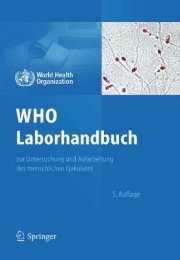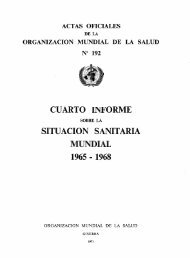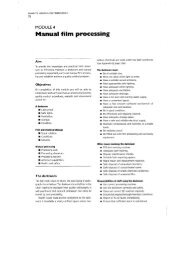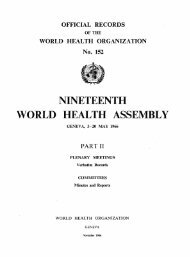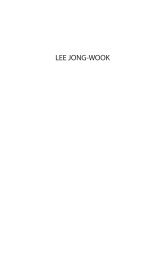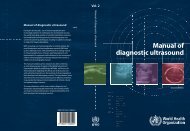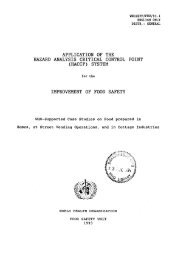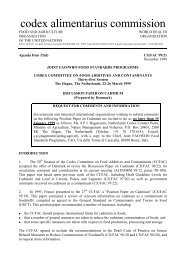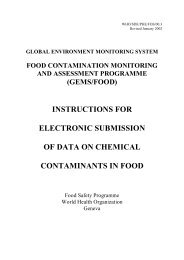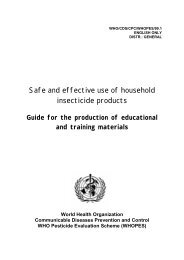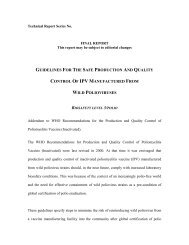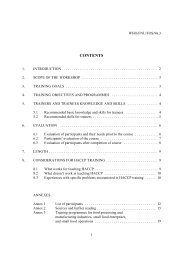N uadThaiTherapy - Multiple Choices - World Health Organization
N uadThaiTherapy - Multiple Choices - World Health Organization
N uadThaiTherapy - Multiple Choices - World Health Organization
You also want an ePaper? Increase the reach of your titles
YUMPU automatically turns print PDFs into web optimized ePapers that Google loves.
Benchmark training curriculum for Nuad Thai<br />
3. Benchmark training curriculum for<br />
Nuad Thai<br />
Practitioners, experts and regulators of Nuad Thai consider the typical Type I<br />
programme as the relevant benchmark. This is a 1000 hours (minimum) training<br />
programme for those who have completed at least high-school education or<br />
equivalent, but have no prior health-care training or experience. On completion<br />
of this training programme, Nuad Thai practitioners will be able to practise as<br />
primary-contact health-care practitioners, either independently or as members of<br />
health-care teams in various settings. A typical applicant will have completed at<br />
least high-school education or equivalent, with appropriate training in basic<br />
sciences.<br />
Learning outcomes of a Type I programme<br />
The Type I programme is intended to equip trainees for professional treatment of<br />
some commonly found painful symptoms or diseases of the musculoskeletal<br />
system, and prevention of complications of certain diseases exhibiting<br />
musculoskeletal symptoms. The curriculum is typically structured to provide the<br />
trainee with:<br />
• a basic knowledge of health sciences related to Nuad Thai, including<br />
anatomy, physiology and pharmacology, with a focus on the<br />
neuromusculoskeletal and circulatory systems;<br />
• a basic understanding of common clinical conditions of the<br />
neuromusculoskeletal system;<br />
• a basic knowledge of Thai traditional medicine, with a focus on Nuad<br />
Thai, sen prathan sib, the sen pressure points related to each line, and the<br />
four elements, especially wind-related disorders;<br />
• skill and expertise in Nuad Thai techniques ;<br />
• the ability to decide whether the patient may safely and suitably be<br />
treated with Nuad Thai, or should be referred to another health<br />
professional or health-care facility;<br />
• the capacity to identify contraindications to Nuad Thai or the need for<br />
particular precautions ;<br />
• communication skills to interact with patients and their relatives, fellow<br />
practitioners, other health-care professionals and the general public;<br />
• a high standard of professional ethics and the ability to follow a code of<br />
professional conduct.<br />
<strong>Health</strong> science components<br />
The health science components of a typical Type I Nuad Thai programme<br />
includes:<br />
• basic anatomy;<br />
• basic physiology;<br />
• basic pharmacology;<br />
• basic psychology;<br />
7



